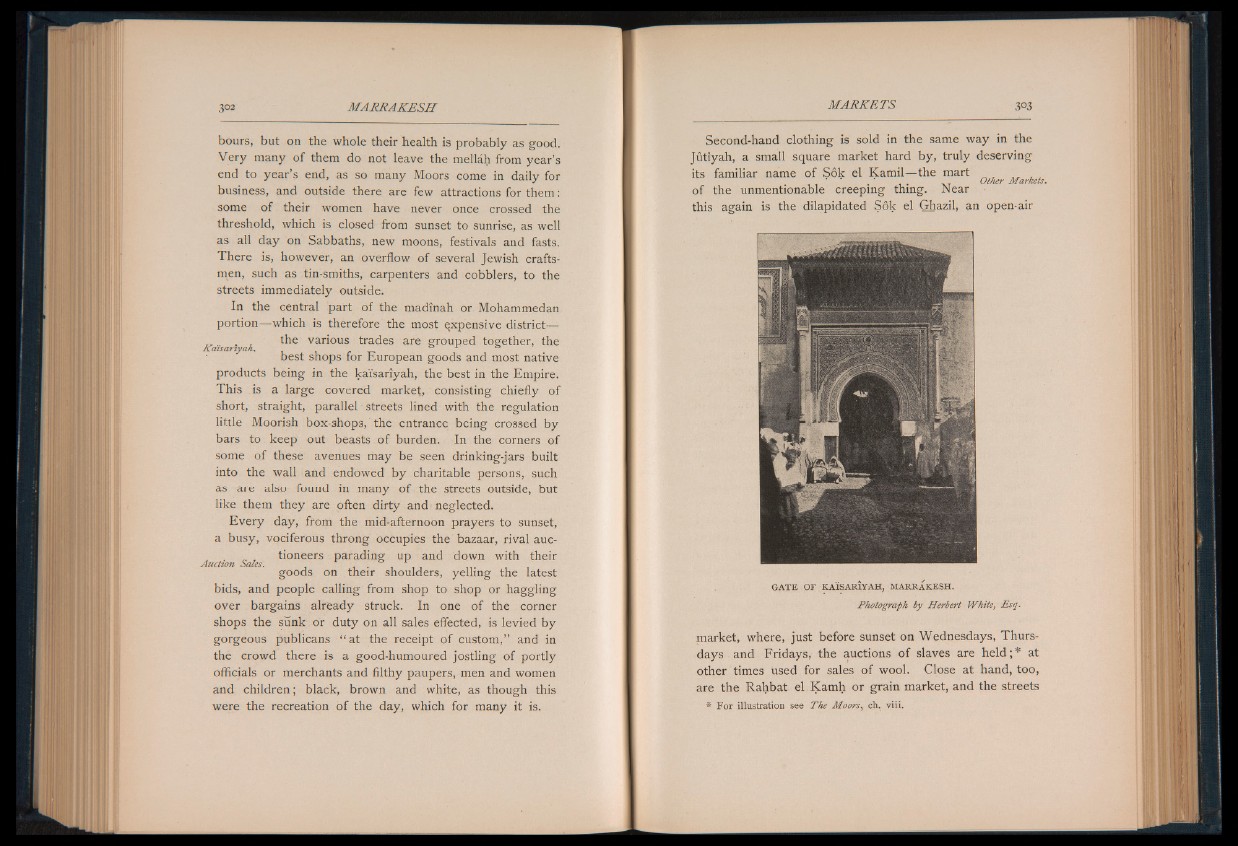
bours, but on the whole their health is probably as good.
Very many of them do not leave the mellah from year’s
end to year’s end, as so many Moors come in daily for
business, and outside there are few attractions for them:
some of their women have never once crossed the
threshold, which is closed from sunset to sunrise, as well
as all day on Sabbaths, new moons, festivals and fasts.
There is, however, an overflow of several Jewish craftsmen,
such as tin-smiths, carpenters and cobblers, to the
streets immediately outside.
In the central part of the madinah or Mohammedan
portion— which is therefore the most expensive district—
the various trades are grouped together, the
KdisariyaA. r _ ° °
best shops for European goods and most native
products being in the kai'sariyah, the best in the Empire.
This is a large covered market, consisting chiefly of
short, straight, parallel streets lined with the regulation
little Moorish box-shops, the entrance being crossed by
bars to keep out beasts of burden. In the corners of
some of these avenues may be seen drinking-jars built
into the wall and endowed by charitable persons, such
as are also found in many of the streets outside, but
like them they are often dirty and neglected.
Every day, from the mid-afternoon prayers to sunset,
a busy, vociferous throng occupies the bazaar, rival auctioneers
parading up and down with their
Auction Sales. .
goods on their shoulders, yelling the latest
bids, and people calling from shop to shop or haggling
over bargains already struck. In one of the corner
shops the sunk or duty on all sales effected, is levied by
gorgeous publicans “ at the receipt of custom,” and in
the crowd there is a good-humoured jostling of portly
officials or merchants and filthy paupers, men and women
and children; black, brown and white, as though this
were the recreation of the day, which for many it is.
Second-hand clothing is sold in the same way in the
Jutiyah, a small square market hard by, truly deserving
its familiar name of Sok el Kamil— the mart TeS
* n / f n ' t '& P T S
of the unmentionable creeping thing. Near
this again is the dilapidated Sok el Ghazil, an open-air
G A T E OF K A ÏSAR ÎYAH , MARRAKESH.
Photograph by Herbert White, Esq.
market, where, just before sunset on Wednesdays, Thursdays
and Fridays, the auctions o f slaves are h eld;* at
other times used for sales of wool. Close at hand, too,
are the Rahbat el Kamh or grain market, and the streets
* For illustration see The Moors, ch. viii.